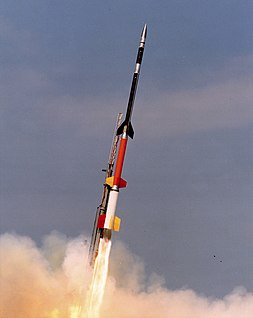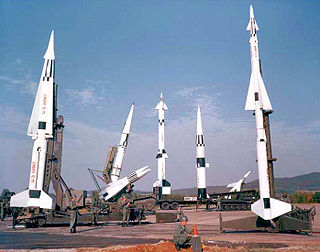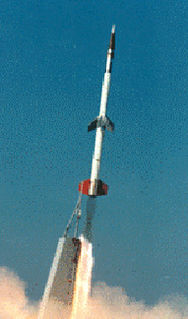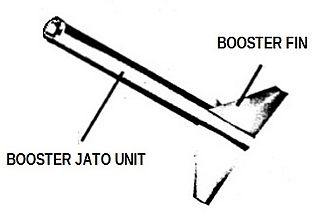
Taurus Nike Tomahawk, or TNT for short, is a sounding rocket which was first built in 1983. When it was in operation it was used to explore the upper atmosphere.

A sounding rocket, sometimes called a research rocket, is an instrument-carrying rocket designed to take measurements and perform scientific experiments during its sub-orbital flight. The rockets are used to carry instruments from 30 to 90 miles above the surface of the Earth, the altitude generally between weather balloons and satellites; the maximum altitude for balloons is about 25 mi (40 km) and the minimum for satellites is approximately 75 mi (121 km). Certain sounding rockets have an apogee between 620 and 930 miles, such as the Black Brant X and XII, which is the maximum apogee of their class. Sounding rockets often use military surplus rocket motors. NASA routinely flies the Terrier Mk 70 boosted Improved Orion, lifting 600–1,000-pound (270–450 kg) payloads into the exoatmospheric region between 60 and 125 miles.
The TNT was created by WFF by combining a Taurus motor (the M6 engine from the Honest John rocket as a first stage with a Nike booster as a second stage, and a Tomahawk sounding rocket as the sustainer. The upper two stages together are also known as the Nike Tomahawk. The TNT flew 17 missions between 1 September 1983 and 6 December 1991 with only one failure (success rate of 94.12%).

The MGR-1 Honest John rocket was the first nuclear-capable surface-to-surface rocket in the United States arsenal. Originally designated Artillery Rocket XM31, the first unit was tested on 29 June 1951, with the first production rounds delivered in January 1953. Its designation was changed to M31 in September 1953. The first Army units received their rockets by year's end and Honest John battalions were deployed in Europe in early 1954. Alternatively, the rocket was capable of carrying an ordinary high-explosive warhead weighing 1,500 pounds (680 kg).

Project Nike was a U.S. Army project, proposed in May 1945 by Bell Laboratories, to develop a line-of-sight anti-aircraft missile system. The project delivered the United States' first operational anti-aircraft missile system, the Nike Ajax, in 1953. A great number of the technologies and rocket systems used for developing the Nike Ajax were re-used for a number of functions, many of which were given the "Nike" name . The missile's first-stage solid rocket booster became the basis for many types of rocket including the Nike Hercules missile and NASA's Nike Smoke rocket, used for upper-atmosphere research.
The TE-416 Tomahawk is a rocket developed by the American company Thiokol at the beginning of the 1960s for Sandia National Laboratories. Although the TE-416 Tomahawk can be launched alone, it was started predominantly as upper stage in connection with other rockets, for example with a Nike rocket as first stage. The TE-416 Tomahawk has a thrust of 43 kN and a fuel time of 9.5 seconds. The diameter of the TE-416 tomahawk is 23 centimeters and the fin span is 93 centimeters.





